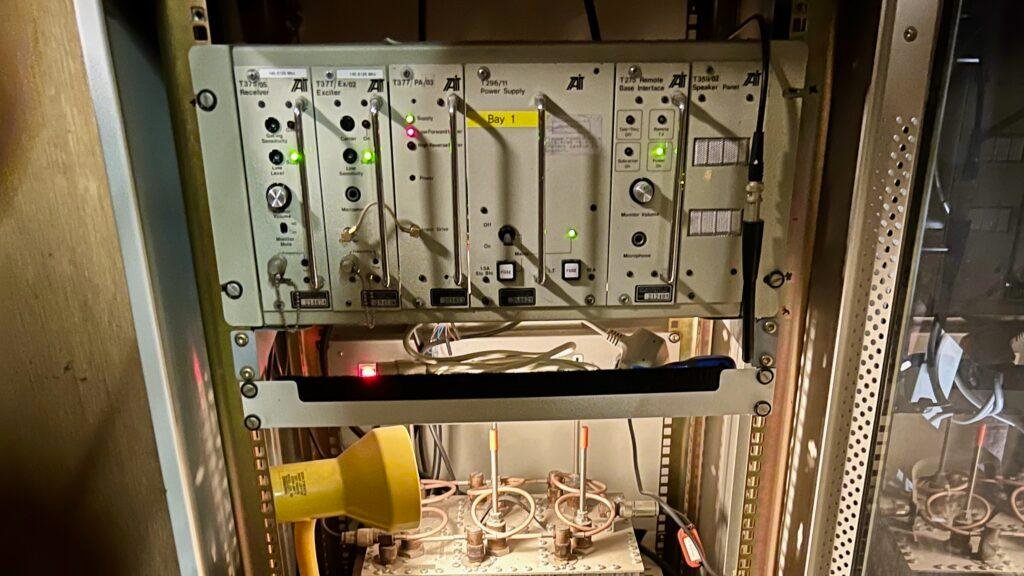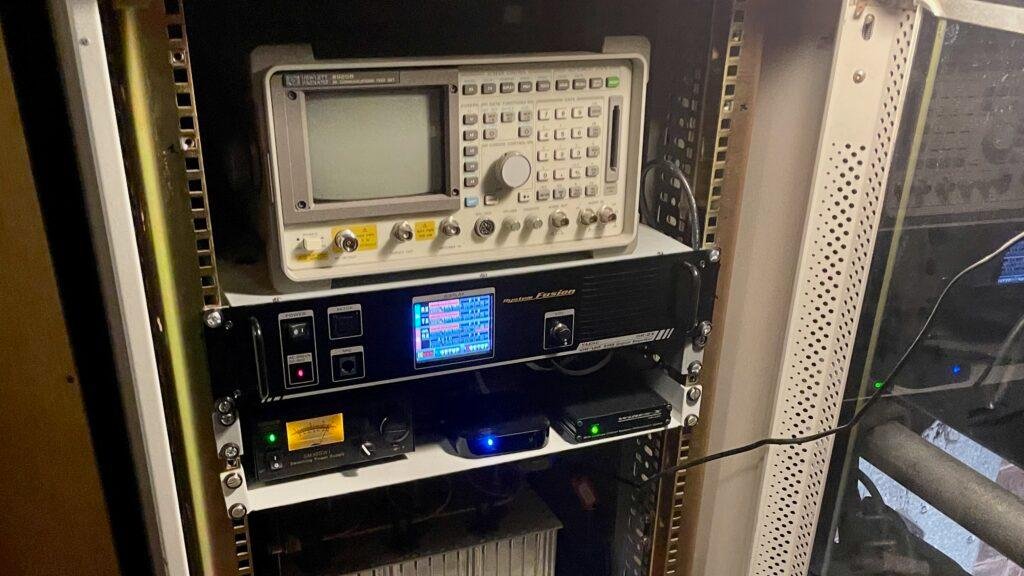Post updated 28th April 2023 to correct previous VW/DN comments (in italics)
Just a short note to let everyone know of the latest developments.
We’re confident that the new hardware appears to work just fine, at least on the bench. The team are now waiting for a suitable opportunity to get the new repeater installed on site. We may have to wait another month or two for this, but we’ll keep you posted once we have a target date. In the meantime, the existing hardware continues to function.
It may be a good time to introduce everyone to the intended set-up. The Yaesu DR-2XE offers both standard analogue FM and C4FM. Whatever the receiver hears will be the mode that’s used. Analogue in, analogue out. C4FM in, C4FM out. It’s one or the other, but not both together.
The repeater will normally be connected to Wires-X room 05239, SW-LANCS. If you wish to disconnect it and connect up somewhere else, that’s perfectly fine. After fifteen minutes of inactivity the repeater will automatically re-join SW-LANCS. Please be aware the the connection to SW-LANCS only works if you’re using C4FM.
As previously mentioned in other posts, Yaesu do not allow any none native connection to Wires-X. For those that do not have direct access to a node or repeater that’s connected to Wires-X, the only option to connect somewhere remote is via some form of Hotspot. We have therefore created a YSF Reflector, also called SW-LANCS. Its number is 01704, you should be able to find it on a Pi-Star dashboard. Using a DVMEGA and another Wires-X node (both on dummy loads), these two networks are now bridged together. It shouldn’t matter which SW-LANCS you connect to, you will be heard on both networks. While the hotspot supports both Voice Wide (VW) and Digital Narrow (DN) meaning both will work just fine, please note that if you wish to connect up using your DMR radio and a hotspot running DMR2YSF, then only Digital Narrow (DN) will work.
The GB3OA team.

